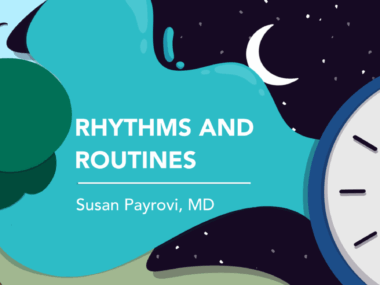High-efficacy RRMS therapies may help maintain capacity to work
Study in Denmark found less need for protected employment programs
Written by |

The use of high-efficacy disease modifying therapies (DMTs) among relapsing-remitting multiple sclerosis (RRMS) patients may aid their capacity to work on the economy — and put them at a lower risk of needing protected employment programs — than those on moderate-efficacy DMTs, according to a new study from Denmark.
The study found that people with RRMS who are started on high-efficacy DMTs may be less likely to enter such protected programs than patients initially prescribed moderate-efficacy treatments.
These findings suggest that the use of more effective multiple sclerosis (MS) treatments may have a socioeconomic impact on patients and their capacity to do work, per the researchers. However, the team highlighted that the category of DMT did not significantly affect the proportion of people who received disability pensions from the Danish government.
“Initiating [high-efficacy treatment] as the first DMT was associated with a lower risk of becoming employed in a protected employment scheme. … [But] we found no difference in disability pension risk between the two treatment groups,” the researchers wrote.
Still, among MS patients, “treatment strategy can influence labor marked affiliation,” the team wrote.
The study, “Socioeconomic Impact of Initial High vs. Moderate Efficacy Disease-Modifying Therapy in Multiple Sclerosis: Effects on Labor Market Affiliation,” was published in the journal Multiple Sclerosis and Related Disorders. The work was funded by the Danish Multiple Sclerosis Society, a patient organization in Denmark.
Investigating DMT type on patients’ capacity to do work
MS, a progressive disease, is known to affect the brain and spinal cord, and often leads to problems with movement and thinking. A common form of the disease, RRMS is marked by episodes of new or worsening symptoms followed by periods of recovery. Several approved treatments for RRMS are DMTs, which work by suppressing or altering immune system activity to slow or prevent disease progression.
DMTs can be highly effective or moderately effective: High-efficacy DMTs tend to reduce disease activity more than their counterparts but also carry a greater risk of side effects.
There has been widespread study of the effects of high- and moderate-efficacy DMTs on RRMS symptoms. However, the researchers noted, “evidence of DMTs’ impact on socioeconomic outcomes, such as working capacity, is limited.”
Historically, most people with MS begin on a moderate-efficacy DMT, then move to a high-efficacy therapy if they don’t respond. In recent years, though, more patients — particularly those with high disease activity — have been prescribed high-efficacy therapies as their first DMTs.
The latter approach is now most frequently used for new cases of RRMS in Denmark, according to the researchers.
To understand how the type of DMT can impact employment, the researchers looked at two programs in Denmark intended to help people with long-term disabilities, such as those caused by RRMS. Disability pensions are stipends that can provide income without employment when a person’s ability to work is severely reduced.
Another program, called flexi-jobs, offers more flexible employment opportunities for people whose capacity to work has been reduced by at least 50% and are therefore unable to get a job under other circumstances.
“Flexi-jobs … often serve as an intermediate step for individuals whose condition may later necessitate a transition to disability pension,” the researchers wrote.
No differences found on disability pensions, however
The team used a national MS registry to identify people with RRMS on DMTs. They cross-referenced this with a database of disability pensions and flexi-jobs using the personal identification number assigned to each person in Denmark.
Then, they matched pairs of individuals on moderate- and high-efficacy DMTs with similar demographic characteristics like age and sex to create comparable treatment groups.
Slightly different populations were used to analyze the disability pension and flexi-job programs, as people who were participating in the program of interest before they started DMTs were excluded. Both analyses included slightly more than 1,000 participants, evenly split between the categories of DMT. The patients’ average age at treatment start was 34.
A statistically significant difference between the groups was found when it came to flexi-jobs, according to the researchers. Specifically, after accounting for participants who died, emigrated from Denmark, or reached retirement age, there was a 16.2% probability of enrolling in the flexi-job program within three years in the moderate-efficacy DMT group. In the high-efficacy DMT group, this probability was significantly lower, at 9.3%.
Since labour market affiliation significantly impacts the patient-perceived quality of life, socioeconomic outcomes are meaningful, patient-centered outcomes that regulators and researchers should consider in future studies evaluating the effectiveness of treatment strategies.
Disability pensions did not differ significantly between the groups, but were slightly more common in the moderate-efficacy DMT group. With adjustments, 9.1% of those on high-efficacy therapies and 11.8% of those on moderate-efficacy therapies received disability pensions within three years of initiating treatment.
These findings indicate that high-efficacy DMTs may minimize the effects of RRMS on working capacity compared to moderate-efficacy DMTs. However, “it is worth noting that disability pensions and flexi-jobs are complex outcomes subject to political and social legislation,” rather than objective measures of working capacity, the researchers wrote.
Both programs are also specific to Denmark, so the team cautions against generalizing their findings too broadly, though some of their findings may also be applicable elsewhere. But, “we believe that extrapolations, to some extent, are valid in different countries,” the researchers wrote.
Overall, per the scientists, these findings highlight the need for clinicians to consider work ability among patients when prescribing treatments for RRMS.
“Since labour market affiliation significantly impacts the patient-perceived quality of life, socioeconomic outcomes are meaningful, patient-centered outcomes that regulators and researchers should consider in future studies evaluating the effectiveness of treatment strategies,” the team concluded.







